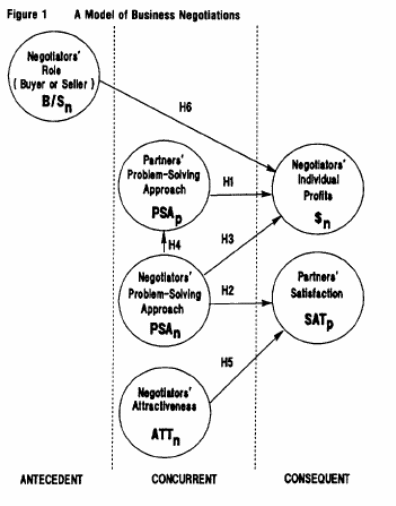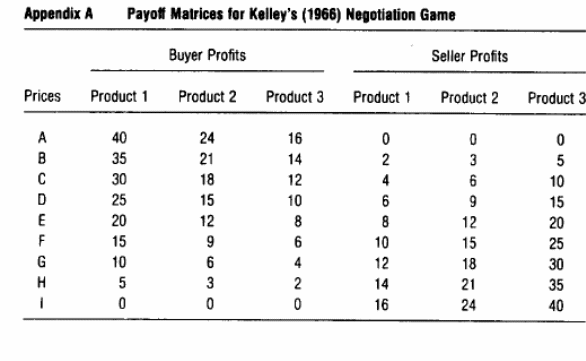Introduction
Globalization is already a fact of life and so is the phenomenon of multinational corporations. Businesses that succeed in their home markets but find competition has become intense or the market possibly saturated search for new opportunities overseas. Since the mid-1990s, the spread of the World Wide Web to all industrialized and emergent economies not only added one more retail channel but also greatly facilitated the management of supply chains. At the same time, more open borders, relaxation of tariff barriers, and incentives provided by host governments have made foreign direct investment more attractive than ever.
Statement of the Problem
It is in this context of continuing increases in trade and investment links that this paper examines one aspect of global management: how does one smoothen, facilitate and speedily conclude cross-cultural negotiations?
From the American perspective, a dominant posture was possible in the decades when foreign aid and the nuclear umbrella of the Cold War made for immeasurable clout. Both Europe and Japan took time to recover from the devastation of World War II. And the rest of what was then the developing world simply lacked the means to develop their natural resources on top of seeing to the basic needs of their people.
Today, the leading nations of the industrialized West have grown immensely rich and assertive. The second rank of newly-industrializing countries – Brazil, Russia, India, and China – offer the benefits of cheap labor but are also more assertive about their economic clout. Together, these four and the Organization for Economic Cooperation and Development members compete with America for business opportunities and are hard bargainers themselves when bilateral trade and investments are on the agenda.
Despite ample time and resources devoted to learning about the culture, business practices, and face-to-face mannerisms of foreigners, American businessmen have a spotty record in carrying out negotiations (Copeland & Griggs, 1985). What else plagues the process besides the obvious propensity of Americans for frank statements versus the inclination of others for circumlocution and indirect verbalization?
Researchers ascribe the lack of consistent success to at least two factors. The first is doing exclusively domestic research on the effectiveness of the traditional social psychology framework concerning human behavior and interaction in negotiations (Perdue and Summers, 1991). And yet, there is no lack of theory and anecdotal evidence revealing differences in the behavioral inclinations of Americans and foreigners (Clark, 1990).
The second factor that seems to undermine negotiation outcomes is that according to Perdue and Summers (1991) by way of example, Americans are schooled in the problem-solving approach (PSA) as a way of avoiding the unproductive processes of individualistic or distributive negotiations. PSA presumes that all sides in a negotiation value cooperation and exchange of information; accordingly, negotiations start with asking questions about what the other party needs, wants, and requires so that all can work towards “win-win” or mutual gain (Gulliver, 1979; Pruitt, 1981).
And yet, the proof that PSA is a viable construct for understanding foreign counterparts is either sparse or empirically nonexistent. Little is known about whether: a) PSA applies completely to the negotiating patterns of foreign businessmen and government officials; b) Alternatively, whether PSA is contrary to how foreigners negotiate; or, c) PSA applies in varying ways in different cultures. One symptom of this, Graham et al. (1994) contend, is that existing models are not comprehensive enough.
A Problem-Solving Model
The model takes into account, first of all, the apparently contradictory facts of desire for some mutually acceptable goal and conflicting interests in any negotiation:

Far from being a cohesive whole, a negotiation comprises three segments that correspond to the stages in the process. In what Graham et al. (1994) term the “antecedent” phase (the left-hand side of the model), one gives due consideration to the situational context attending the negotiations and the personal or culturally-bound traits both sides bring to the table. To cite just two examples, it may be that:
- A Wal-Mart under criticism from OSHA and child-labor protesters at home is in Hong Kong to try and persuade its traditional toy and garments manufacturer-suppliers to mitigate their “sweatshop” conditions and avoid employing young teenagers. The Chinese side, including representatives of the central export and industry regulatory body, is well aware of the scarcity of jobs and grinding poverty in the communities where their workshops and factories are based. Knowing very well how every hard-up Chinese family already sends children as young as five years to help out in the farm, the storefront or seek other work to bring some renminbi home, they are puzzled by the American insistence on having both low-priced goods and fair labor practice too, on having their cake and eating it. Hiring only adults will mean raising average wages. Improving working conditions in the factories will also add to the cost of exports to the United States. There are formidable cultural chasms between the two nations that make negotiations prickly, to say the least (Adler, Brahm & Graham, 2006).
- Representatives of the US Fed, Treasury, and Japan’s Dai-Ichi Kangyo bank are looking to agree on the interest rate that will apply to U.S. 10-year treasuries. The Americans would like the cost to their government, represented by the coupon rate on these T-bills, to be as low as possible. In the first morning’s round of negotiations, the American side is hopeful of concluding the negotiations quickly because their initial proposal of 1.75% per annum interest is met by round after round of nods and “hai” (yes) from the Japanese panel. But when the Americans push the Memorandum of Understanding across the table asking for these to be initialed, they are amazed at being stonewalled. Unknown to them, the apparent agreement by the Japanese is solely a cultural peculiarity of Japanese indicating merely that they understand what the other fellow is saying.
The middle segment of Figure 1 is where Graham et al. makes their signal contribution to broadening the analysis and understanding of negotiations. Here, one examines the processes ongoing during bargaining. What PSA do the partners or allies on one side of the table employ? In turn, what PSA characterizes their cross-table dealings? And taking a valuable lesson from social psychology, how attracted are negotiators one to another and therefore that much more inclined to agree or make concessions?
Finally, the right-hand side of the model consists of the dependent variables, the negotiation outcomes that are the most amenable to measurement. “Profits” are the gains achieved from the negotiation. The other dependent variable is the self-evident one of satisfaction with negotiation outcomes. The integration of this second dependent variable presupposes, of course, that both sides must be satisfied, i.e. negotiation is not a total victory for one side and complete collapse for the other.
“Profits” may be measured as “go/no go” decisions (such as when a Japanese management team approves the collective bargaining agreement with the union at its Tennessee plant), economic profit (as when the Chinese authorities and partners agree to pay Broken Hill a price per ton of iron ore that approximates world prices and the cost of shipping the raw material from Australia to China), or having to do with political gain and increased prestige (e.g. the U.S. Senate wresting safety concessions from Toyota America as a consequence of the ongoing recall of the Prius, Lexus, RAV4 and many other models).
This theoretical model generates six hypotheses that might be tested in cross-cultural contexts:
- H1: The chances of individual profits for negotiators improve when their partners employ PSA strategies.
- H2: There is greater satisfaction with outcomes when the other party also employs PSA strategies.
- H3: When they employ PSA strategies, negotiators accept reduced individual profits. This is explained by fact that the best way for a negotiator to maximize his/her profits to the exclusion of everyone else’ is to use distributive or instrumental tactics (i.e., use threats or make promises to wrest concessions from the other party).
- H4: Negotiators who commence PSA strategies induce their partners to do the same.
- H5: Irrespective of individual profits attained, the satisfaction of one receptive partner is increased when dealing with physically attractive negotiators.
- H6: Superior status and role as buyer strongly influence concessions by the inferior or selling party. Hence, the former is apt to gain higher individual profits than the latter.
Potential Solutions
It stands to reason, given the lack of empirical proof about the preferences and negotiating styles of foreign counterparts that a model such as shown in Figure 1 above needs to be tested on representatives and foreign cultures and the results compared with American baselines.
Such a solution should permit an investigation of whether PSA applies completely or not at all; what factors differ and should be taken into consideration in follow-up studies; and what comparative criteria or performance metrics are applicable in a variety of cultures.
Implementation Strategy
One implementation strategy for productive PSA-based negotiation that comes to mind, particularly in the context of foreign direct investment by American firms where there is both government intervention and resistance by communities (affected by the project site) and other stakeholders, is consensus building. Ore (2008) recommends forging consensus by a combination of taking care to build trust, managing reputation upfront, managing connections with all stakeholders, employing a third-party facilitator to investigate what other parties want, involving all stakeholders in the negotiation, embarking on a joint assessment of economic and ecosystem impacts, engaging with problem-solving as an all-parties effort, and being open about offering the citizenry a choice.
Success Measurement Techniques
Performance metrics can comprise qualitative variables, quantitative measures, or both. An example of a qualitative success measurement instrument might be a self-administered rating scale checklist that tests satisfaction with the finished agreement (outcome), satisfaction vis-à-vis original (pre-negotiation) expectations, with the negotiating process itself, the attractiveness of partners or negotiator one dealt with, and self-rating on the use of PSA strategies. A quantitative metric, on the other hand, might consist of something like Table 1 below:

References
Adler, N. J., Brahm, R. & Graham, J. L. (2006). Strategy implementation: A comparison of face-to-face negotiations in the Peoples Republic of China and the United States. Strategic Management Journal, 13 (6); 449 – 466.
Clark, T. (1990). International marketing and national character: A review and proposal for an integrative theory. Journal of Marketing, 54 (10); 66-79.
Copeland, L. & Griggs, L. (1985). Going international. New York, NY: Plume Books.
Graham, J. L, Mintu, A. T. & Rodgers, W. (1994). Explorations of negotiation behaviors in ten foreign cultures using a model developed in the United States. Management Science, 40 (1); 72-95.
Gulliver, P. H. (1979). Disputes and negotiations: A cross-cultural perspective. New York, NY: Academic Press.
Ore, L. E. (2008). Cross-cultural negotiation and consensus-building strategies for foreign-investment projects: Conflict prevention due diligence. Web.
Perdue, B. & Summers, J. (1991). Purchasing agents’ use of negotiation strategies. Journal of Marketing Research; 175-189.
Pruitt, D. G. (1981). Bargaining behavior. New York, NY: Academic Press.
